The United States is home to some of the world’s most prestigious and historic universities, many of which were founded before the nation itself existed. These institutions, established during the colonial era and early years of American independence, have shaped the country’s intellectual, political, and cultural landscape.
From Harvard—the oldest, founded in 1636—to public pioneers like the University of Georgia (1785), these universities have educated presidents, Nobel laureates, and global leaders while preserving centuries of tradition. Here are the 20 Oldest University in America, ranked by founding date, each with a unique legacy in higher education.
Top 20 Oldest University in America
1. Harvard University (1636) – Cambridge, MA

Founded in 1636 as New College, Harvard is the oldest institution of higher education in the United States and a global leader in academic excellence. Renowned for its rigorous liberal arts curriculum and groundbreaking research, Harvard has educated eight U.S. presidents and over 160 Nobel laureates. The university’s 209-acre campus features iconic landmarks like Harvard Yard and Widener Library, which houses over 20 million volumes across 70 branches.
Key Highlights
- Firsts: America’s oldest university
- Notable Alumni: Barack Obama, Mark Zuckerberg, Natalie Portman
- Library: World’s largest academic library system
Institutional Profile
| Category | Details |
|---|---|
| Founded | 1636 |
| Type | Private Ivy League |
| Endowment | $53.2 billion (2023) |
| Campus | 209-acre urban |
| Motto | Veritas (Truth) |
Did You Know?
Harvard’s endowment is larger than the GDP of nations like Croatia and Costa Rica.
2. College of William & Mary (1693) – Williamsburg, VA
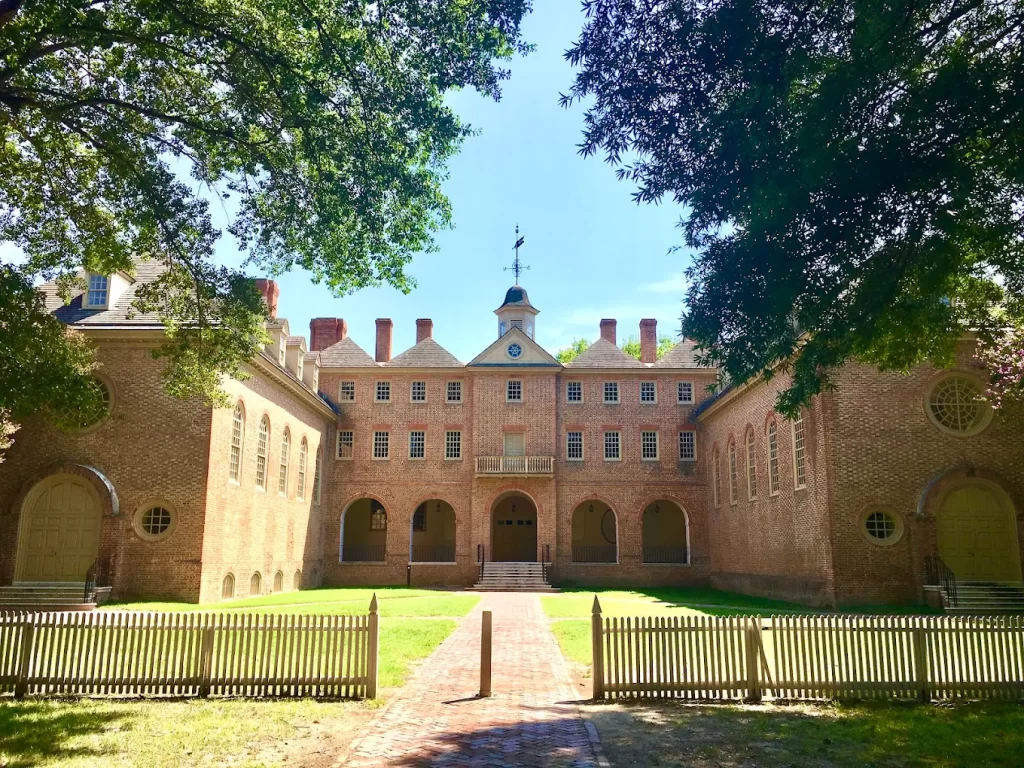
Established in 1693 by royal charter, William & Mary is the second-oldest university in America and the first to install an honor system. Known as the “Alma Mater of a Nation,” it educated U.S. presidents Thomas Jefferson, James Monroe, and John Tyler. The 1,200-acre campus blends historic Colonial architecture with modern research facilities.
Key Highlights
- Firsts: First U.S. law school (1779)
- Traditions: Annual Yule Log Ceremony since 1935
- Alumni: 3 U.S. presidents
Institutional Profile
| Category | Details |
|---|---|
| Founded | 1693 |
| Type | Public research |
| Endowment | $1.3 billion |
| Campus | 1,200-acre historic |
| Motto | Hark Upon the Gale |
Did You Know?
W&M is the only U.S. university still operating under its original royal charter.
3. Yale University (1701) – New Haven, CT

Founded as the Collegiate School in 1701, Yale is the third-oldest U.S. university and a cornerstone of Ivy League education. Its Gothic-style campus spans 373 acres and includes rare collections like the Yale Babylonian Collection. Yale pioneered undergraduate majors and awarded the first Ph.D. in America.
Key Highlights
- Firsts: First U.S. Ph.D. (1861)
- Collections: 15M+ items in Yale Library
- Alumni: 5 U.S. presidents
Institutional Profile
| Category | Details |
|---|---|
| Founded | 1701 |
| Type | Private Ivy League |
| Endowment | $41.4 billion |
| Campus | 373-acre urban |
| Motto | Lux et Veritas (Light and Truth) |
Did You Know?
Yale’s secret societies (like Skull and Bones) have included presidents and CIA directors.
4. Princeton University (1746) – Princeton, NJ
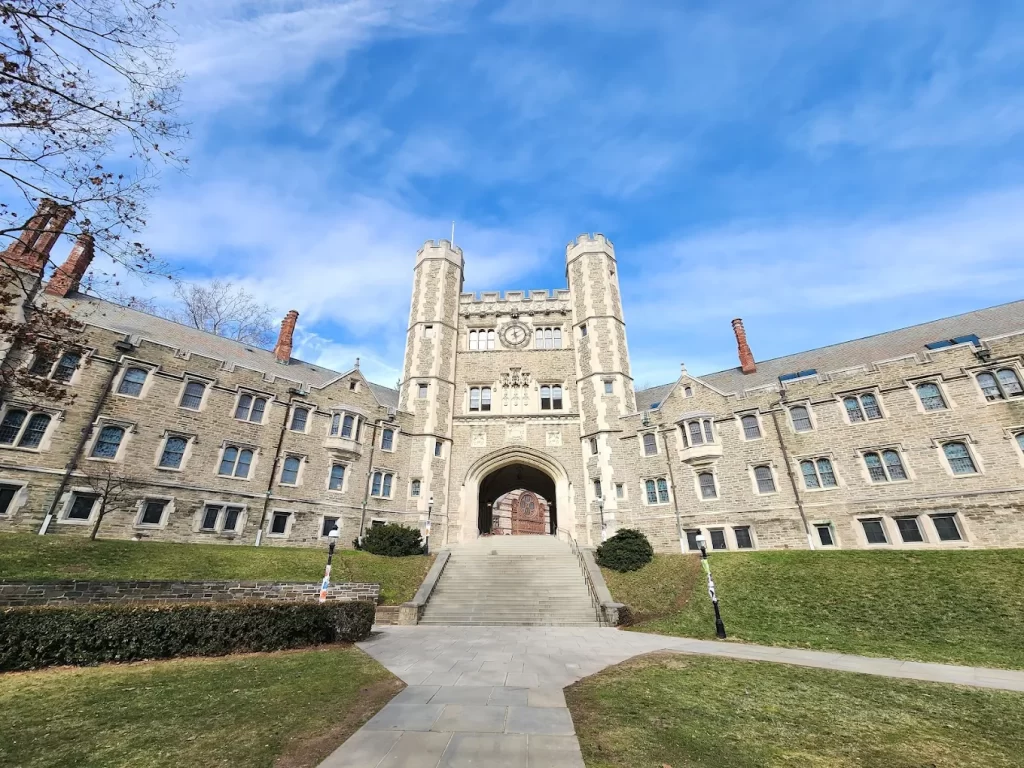
Founded as the College of New Jersey, Princeton is the fourth-oldest university in the U.S. and a world leader in research. Known for its distinctive residential college system and Gothic architecture, Princeton has produced 69 Nobel laureates and two U.S. presidents. The 600-acre campus features Albert Einstein’s former office and an art museum with over 100,000 works.
Key Highlights
- Firsts: No student loans policy (need-blind aid)
- Notable Alumni: Michelle Obama, F. Scott Fitzgerald
- Unique: Eating clubs instead of Greek life
Institutional Profile
| Category | Details |
|---|---|
| Founded | 1746 |
| Type | Private Ivy League |
| Endowment | $37.7 billion |
| Campus | 600-acre suburban |
| Motto | Dei sub numine viget (Under God’s power she flourishes) |
Did You Know?
Princeton’s Nassau Hall served as the U.S. Capitol for four months in 1783.
5. University of Pennsylvania (1749/1751) – Philadelphia, PA
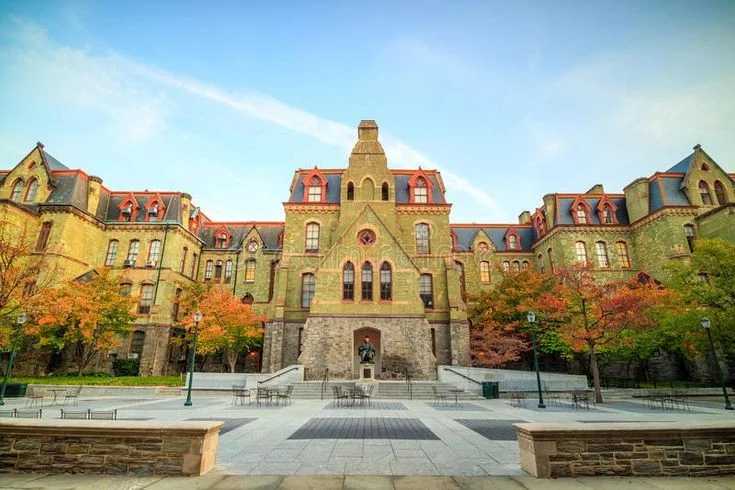
Founded by Benjamin Franklin, Penn is America’s first university and the birthplace of many academic innovations. The 299-acre urban campus blends historic and modern architecture, housing the nation’s first medical school and business school (Wharton). Penn’s interdisciplinary approach emphasizes practical education.
Key Highlights
- Firsts: First U.S. medical school (1765)
- Notable Alumni: Elon Musk, Donald Trump
- Innovation: First general-purpose computer (ENIAC)
Institutional Profile
| Category | Details |
|---|---|
| Founded | 1749/1751 |
| Type | Private Ivy League |
| Endowment | $20.7 billion |
| Campus | 299-acre urban |
| Motto | Leges sine moribus vanae (Laws without morals are useless) |
Did You Know?
Penn’s Button sculpture rotates 365 degrees once per year.
6. Columbia University (1754) – New York, NY

Originally King’s College, Columbia is Manhattan’s oldest institution and a global leader in research. Its 36-acre Morningside Heights campus houses the Pulitzer Prize administration and the world’s largest collection of Tibetan manuscripts outside Tibet.
Key Highlights
- Firsts: First U.S. school to grant MD degree
- Notable Alumni: Barack Obama, Ruth Bader Ginsburg
- Unique: Core Curriculum since 1919
Institutional Profile
| Category | Details |
|---|---|
| Founded | 1754 |
| Type | Private Ivy League |
| Endowment | $13.3 billion |
| Campus | 36-acre urban |
| Motto | In lumine Tuo videbimus lumen (In Thy light shall we see light) |
Did You Know?
Columbia owns 8% of Manhattan’s total land value.
7. Brown University (1764) – Providence, RI

Founded as Rhode Island College, Brown pioneered the Open Curriculum in 1969, allowing students to design their own courses of study. The 146-acre campus features the first U.S. college building (University Hall, 1770) and a vibrant arts scene.
Key Highlights
- Firsts: First Ivy to accept all religions (1764)
- Notable Alumni: John D. Rockefeller Jr., Emma Watson
- Unique: No general education requirements
Institutional Profile
| Category | Details |
|---|---|
| Founded | 1764 |
| Type | Private Ivy League |
| Endowment | $6.9 billion |
| Campus | 146-acre urban |
| Motto | In Deo speramus (In God we hope) |
Did You Know?
Brown’s Van Wickle Gates open inward for matriculation and outward for graduation.
8. Dartmouth College (1769) – Hanover, NH
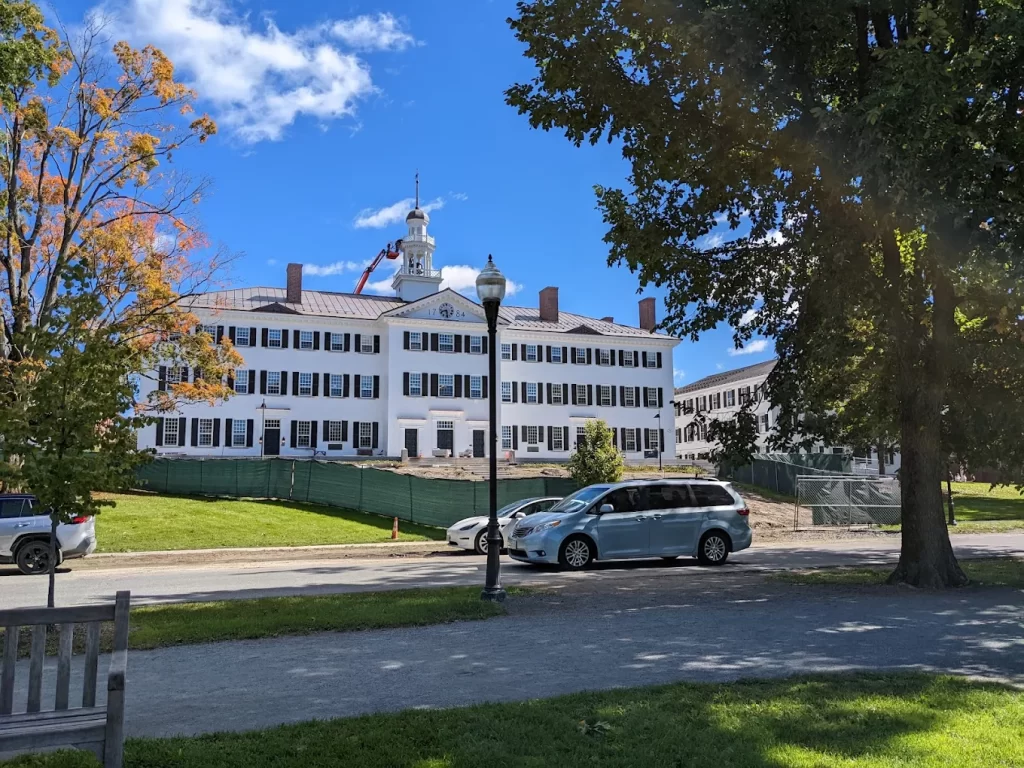
Founded to educate Native Americans, Dartmouth is the smallest Ivy with a 269-acre rural campus. Known for its strong undergraduate focus and outdoor programs, it maintains the nation’s oldest continuous alumni association (1854).
Key Highlights
- Firsts: First U.S. graduate school of management (Tuck, 1900)
- Notable Alumni: Dr. Seuss, Mindy Kaling
- Unique: Dartmouth Outing Club (oldest collegiate outdoors club)
Institutional Profile
| Category | Details |
|---|---|
| Founded | 1769 |
| Type | Private Ivy League |
| Endowment | $8.5 billion |
| Campus | 269-acre rural |
| Motto | Vox clamantis in deserto (A voice crying in the wilderness) |
Did You Know?
Dartmouth’s Winter Carnival is the nation’s oldest winter festival (1911).
9. Rutgers University (1766) – New Brunswick, NJ
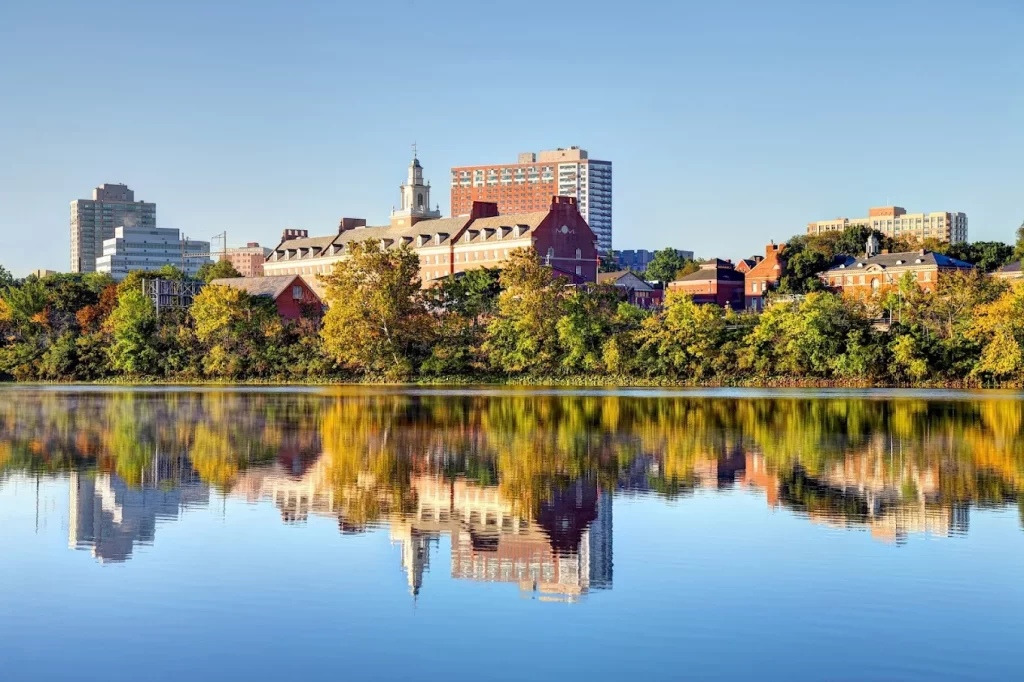
As the eighth-oldest college in America, Rutgers began as Queen’s College and became a land-grant institution. Its 2,685-acre campus spans New Brunswick with notable facilities like the Zimmerli Art Museum.
Key Highlights
- Firsts: Only colonial college to become land-grant
- Notable Alumni: Milton Friedman, Calista Flockhart
- Unique: Birthplace of college football (1869)
Institutional Profile
| Category | Details |
|---|---|
| Founded | 1766 |
| Type | Public research |
| Endowment | $1.9 billion |
| Campus | 2,685-acre urban |
| Motto | Sol iustitiae et occidentem illustra (Sun of righteousness, shine upon the West also) |
Did You Know?
Rutgers’ Grease Trucks inspired the first food trucks in America.
10. University of Delaware (1743) – Newark, DE
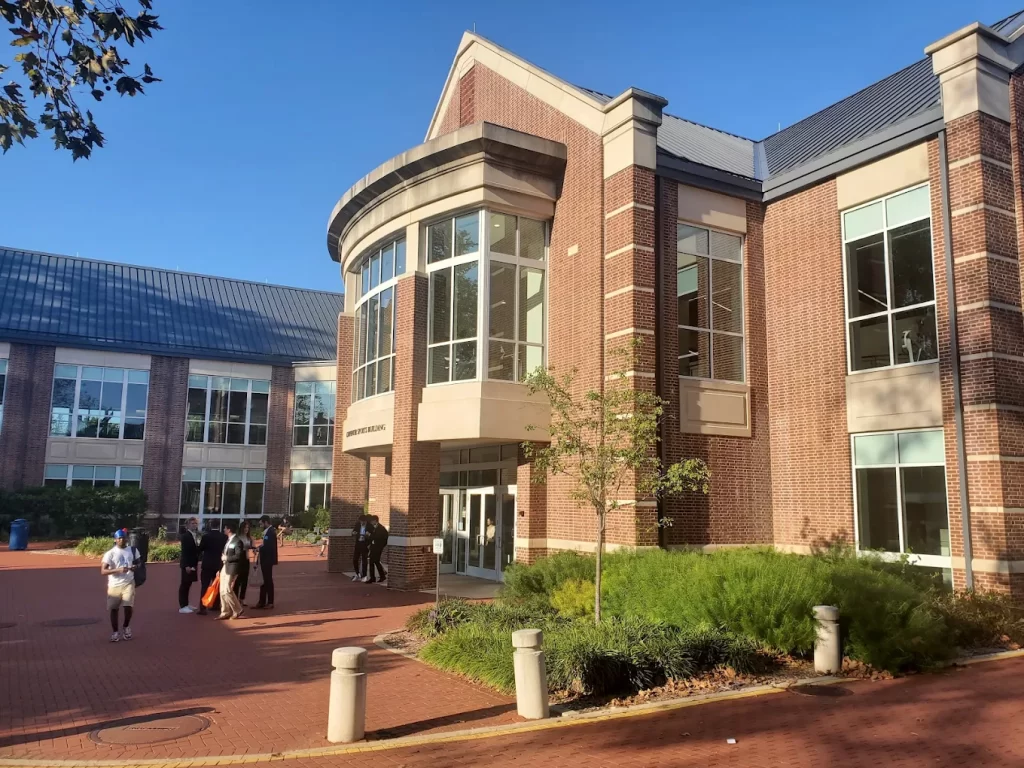
Chartered as Free School in 1743, UD is renowned for its chemical engineering program and study abroad initiatives. The 2,011-acre campus includes a 146-acre farm and the first study abroad program (1923).
Key Highlights
- Firsts: First U.S. study abroad program
- Notable Alumni: Joe Biden, Elena Delle Donne
- Unique: Largest collection of Winslow Homer art
Institutional Profile
| Category | Details |
|---|---|
| Founded | 1743 |
| Type | Public research |
| Endowment | $1.9 billion |
| Campus | 2,011-acre suburban |
| Motto | Scientia sol mentis est (Knowledge is the light of the mind) |
Did You Know?
UD’s Scrounge hackerspace built the world’s tallest LEGO tower (112 feet).
11. Moravian University (1742) – Bethlehem, PA
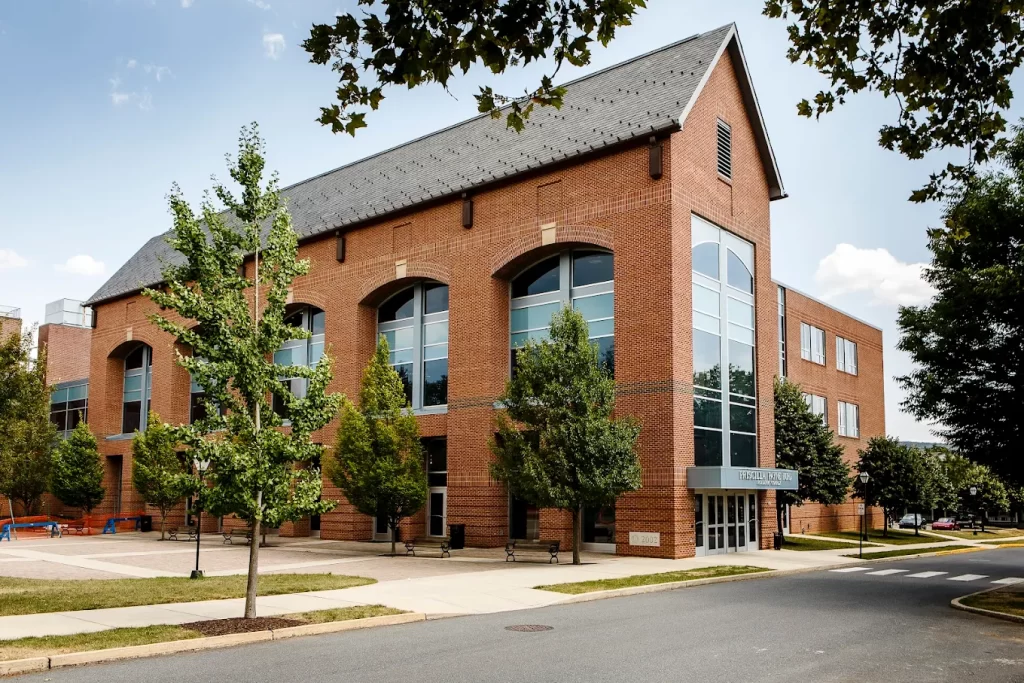
Established as a girls’ school in 1742, Moravian is America’s sixth-oldest college and the first to educate women. This small liberal arts college maintains its historic 85-acre campus with original 18th-century buildings still in use today, including the 1748 Widow’s House.
Key Highlights
- Firsts: First school to educate women (1742)
- Notable Alumni: First female U.S. cabinet member
- Unique: Continuous operation since founding
Institutional Profile
| Category | Details |
|---|---|
| Founded | 1742 |
| Type | Private liberal arts |
| Endowment | $136 million |
| Campus | 85-acre historic |
| Motto | Via Lucis (The Way of Light) |
Did You Know?
Moravian’s archives contain the oldest student diaries in America (1742-49).
12. Washington & Lee University (1749) – Lexington, VA
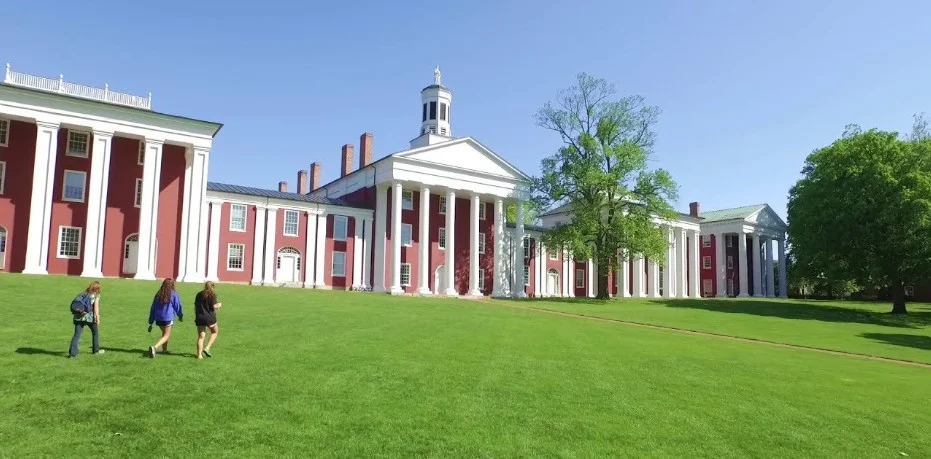
Founded as Augusta Academy, W&L became the first American college to implement the honor system in 1842. The 430-acre campus features the Lee Chapel where Robert E. Lee is buried and maintains the nation’s oldest student-run honor system.
Key Highlights
- Firsts: First honor system (1842)
- Notable Alumni: Meriwether Lewis, Tom Wolfe
- Unique: Speaking tradition (greeting all on campus paths)
Institutional Profile
| Category | Details |
|---|---|
| Founded | 1749 |
| Type | Private liberal arts |
| Endowment | $2.1 billion |
| Campus | 430-acre rural |
| Motto | Non incautus futuri (Not unmindful of the future) |
Did You Know?
W&L’s Mock Convention has correctly predicted presidential nominees since 1908.
13. University of Georgia (1785) – Athens, GA
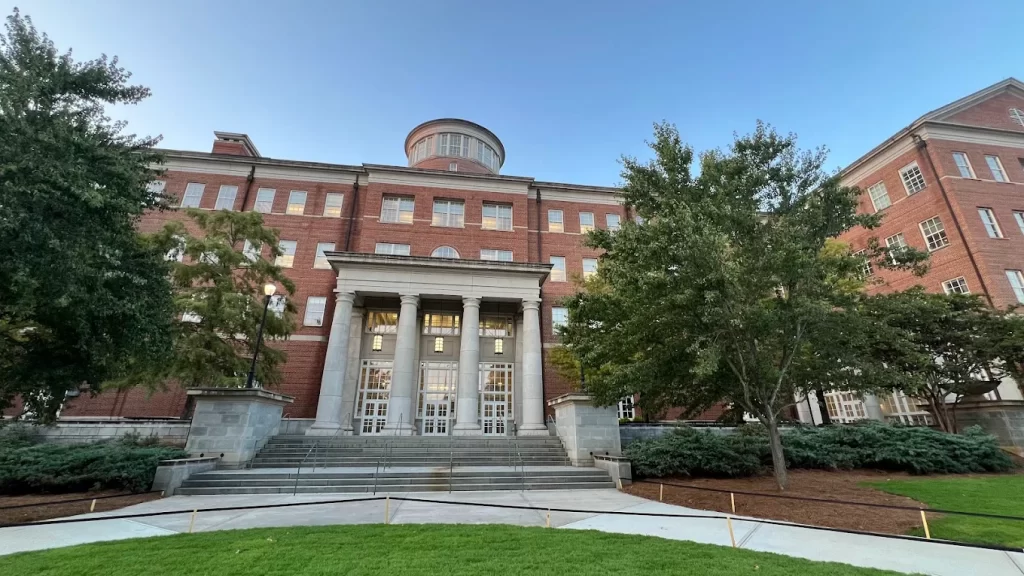
Chartered as America’s first state university, UGA’s 762-acre campus blends antebellum architecture with modern research facilities. The birthplace of public higher education, UGA established the first college of agriculture and the first forestry school.
Key Highlights
- Firsts: First state-chartered university
- Notable Alumni: Ryan Seacrest, Alton Brown
- Unique: 17 libraries including rare Confederate archives
Institutional Profile
| Category | Details |
|---|---|
| Founded | 1785 |
| Type | Public research |
| Endowment | $1.8 billion |
| Campus | 762-acre classic |
| Motto | Et docere et rerum exquirere causas (To teach and to inquire into the nature of things) |
Did You Know?
UGA’s founder Abraham Baldwin signed the U.S. Constitution.
14. University of Pittsburgh (1787) – Pittsburgh, PA
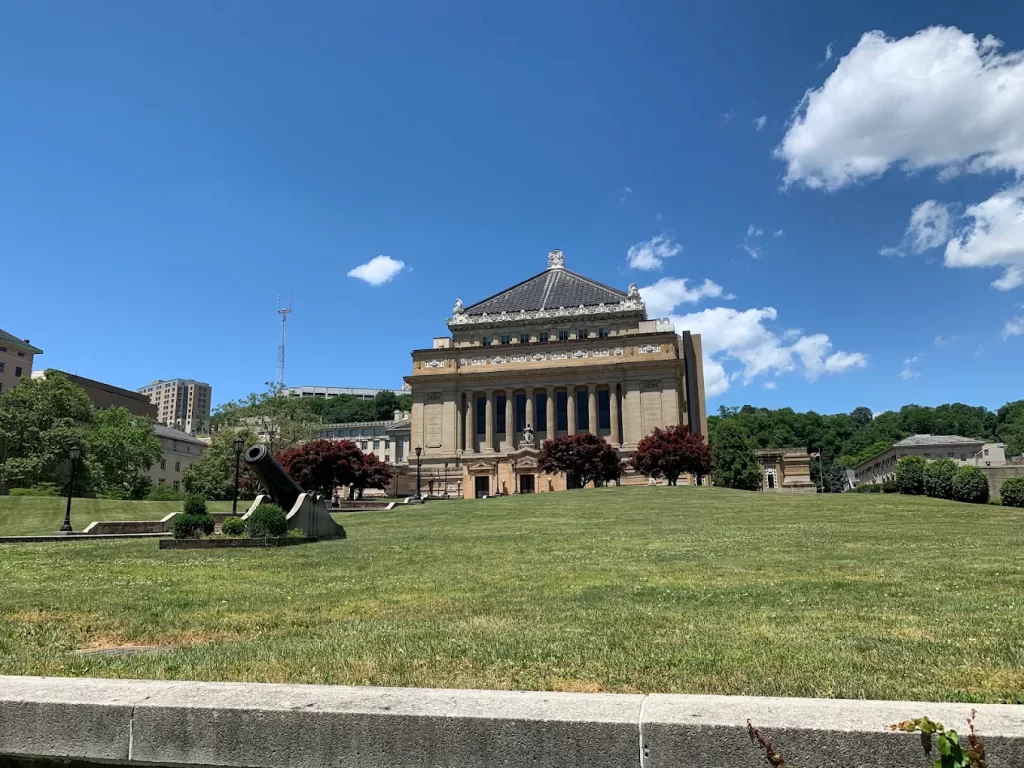
Originally Pittsburgh Academy, Pitt revolutionized medicine with the first polio vaccine and organ transplants. The 132-acre urban campus features the 42-story Cathedral of Learning, the tallest educational building in the Western Hemisphere.
Key Highlights
- Firsts: Polio vaccine (Jonas Salk, 1955)
- Notable Alumni: Gene Kelly, Fred Rogers
- Unique: Nationality Rooms representing 31 cultures
Institutional Profile
| Category | Details |
|---|---|
| Founded | 1787 |
| Type | Public research |
| Endowment | $5.6 billion |
| Campus | 132-acre urban |
| Motto | Veritas et Virtus (Truth and Virtue) |
Did You Know?
Pitt’s Stephen Foster Memorial holds the composer’s original manuscripts.
15. University of North Carolina at Chapel Hill (1789) – Chapel Hill, NC
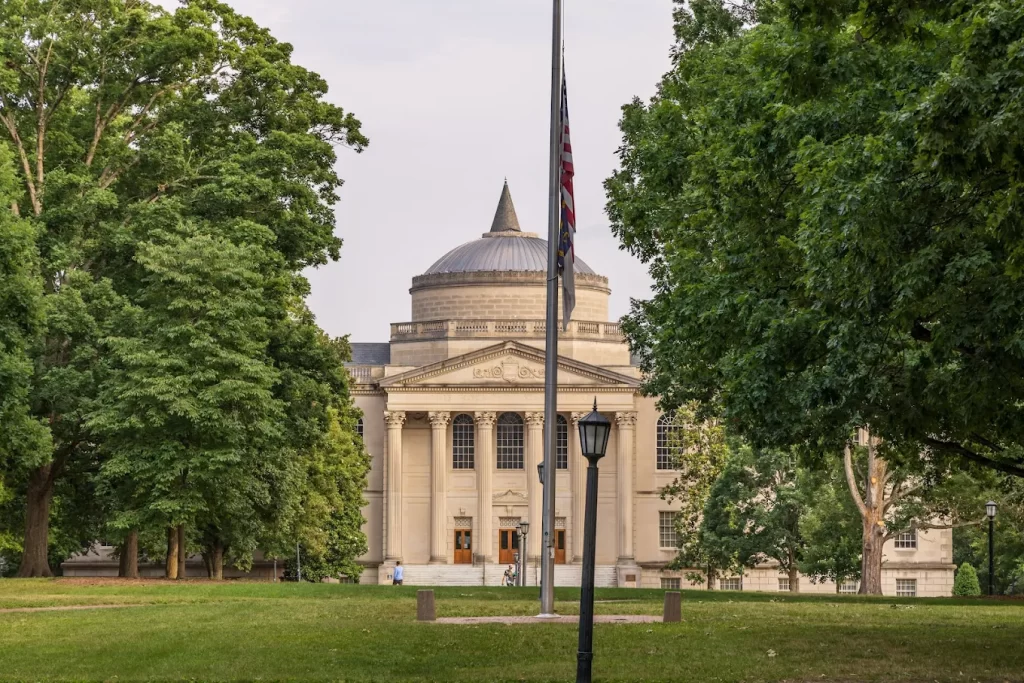
The first public university to enroll students (1795), UNC’s 729-acre campus features the nation’s oldest state university building (Old East). It established the first public university press and the first merit scholarship program.
Key Highlights
- Firsts: First public university to graduate students
- Notable Alumni: Michael Jordan, Thomas Wolfe
- Unique: More Rhodes Scholars than any state university
Institutional Profile
| Category | Details |
|---|---|
| Founded | 1789 |
| Type | Public research |
| Endowment | $5.1 billion |
| Campus | 729-acre arboretum |
| Motto | Lux Libertas (Light and Liberty) |
Did You Know?
UNC’s Davie Poplar tree is said to determine the university’s fate.
16. Georgetown University (1789) – Washington, D.C.
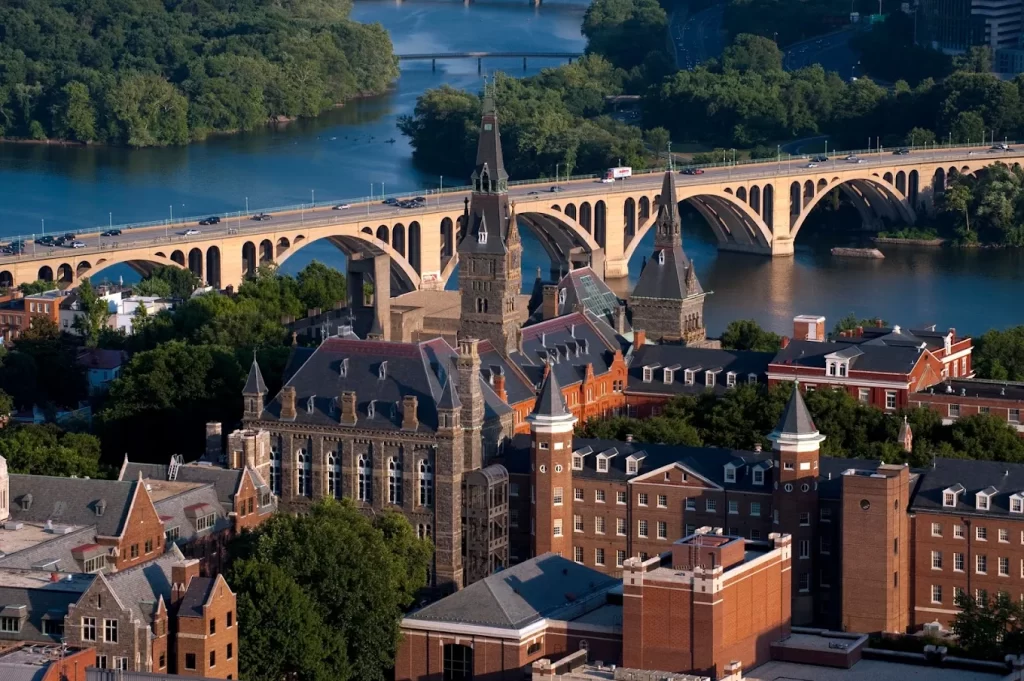
Founded by John Carroll as the first Catholic university, Georgetown’s 104-acre campus overlooks the Potomac. It established the first U.S. school of foreign service and maintains the oldest continuous student theater group (Mask and Bauble, 1852).
Key Highlights
- Firsts: First Catholic university
- Notable Alumni: Bill Clinton, Antonin Scalia
- Unique: Largest collection of medieval manuscripts in America
Institutional Profile
| Category | Details |
|---|---|
| Founded | 1789 |
| Type | Private Catholic |
| Endowment | $3.3 billion |
| Campus | 104-acre urban |
| Motto | Utraque Unum (Both into One) |
Did You Know?
Georgetown’s Healy Hall inspired Hogwarts’ design in Harry Potter films.
17. University of Vermont (1791) – Burlington, VT
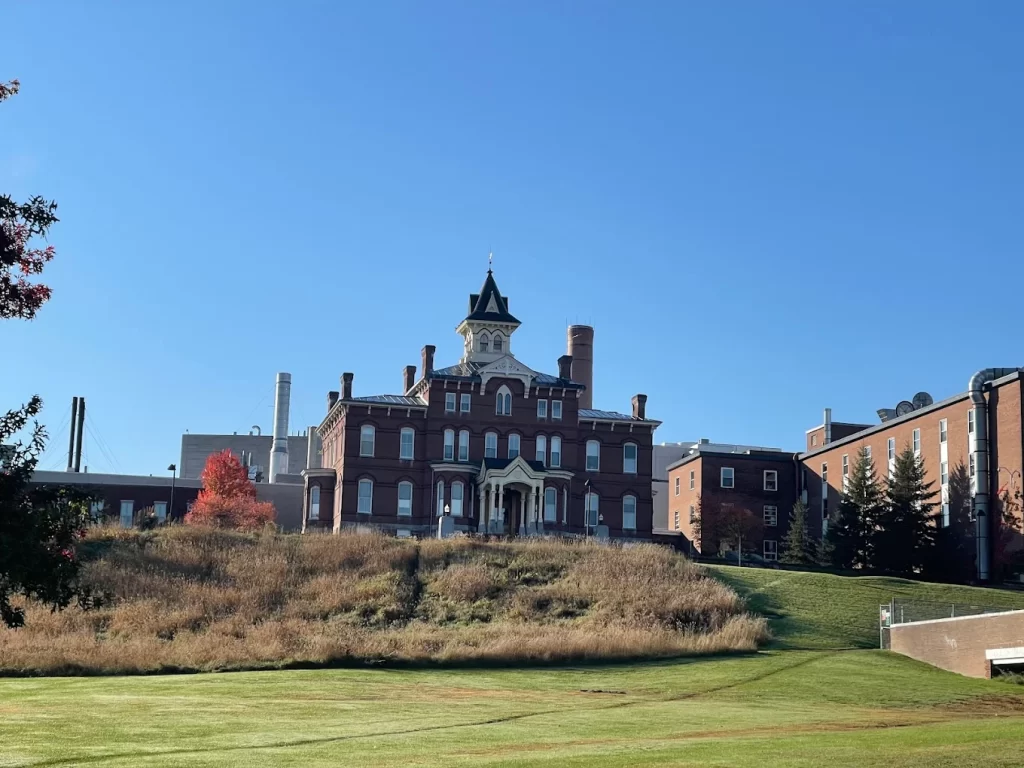
Chartered by Thomas Chittenden, UVM was the first university to declare public support for religious freedom. Its 460-acre campus features the nation’s oldest university green and the first college greenhouse (1807).
Key Highlights
- Firsts: First to ban religious discrimination (1791)
- Notable Alumni: John Dewey, Jody Williams
- Unique: Original land grant from Ethan Allen
Institutional Profile
| Category | Details |
|---|---|
| Founded | 1791 |
| Type | Public research |
| Endowment | $600 million |
| Campus | 460-acre lakeside |
| Motto | Studiis et Rebus Honestis (For studies and honorable deeds) |
Did You Know?
UVM’s library holds the world’s largest collection of Rudyard Kipling materials.
18. Williams College (1793) – Williamstown, MA
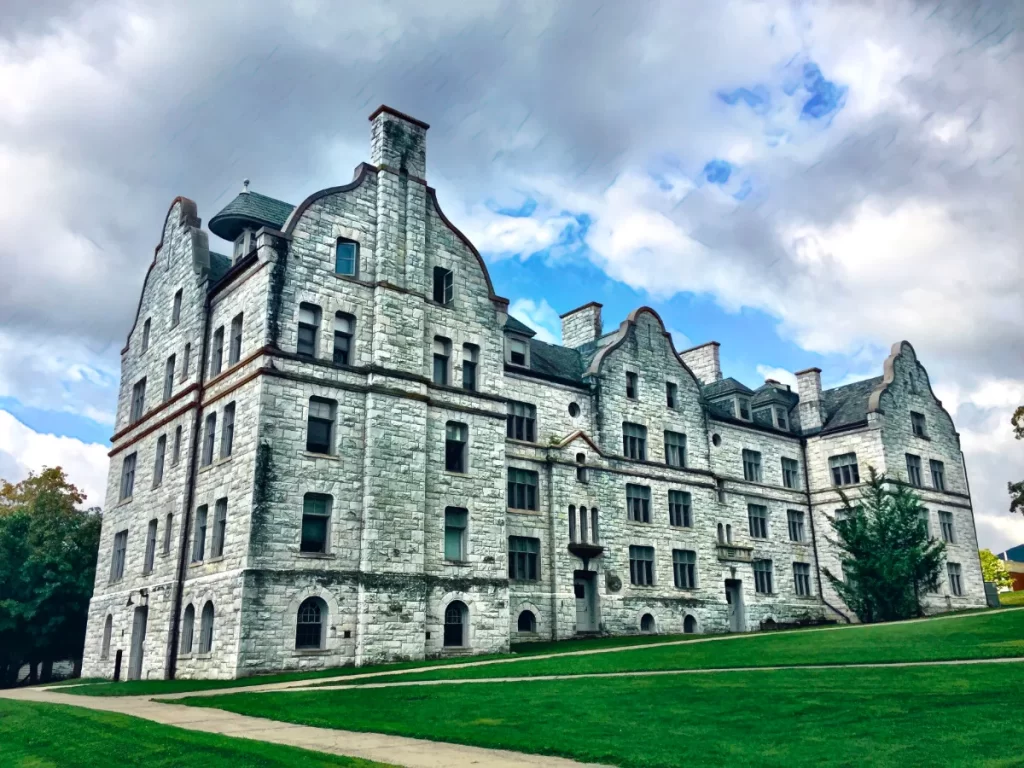
Founded by Ephraim Williams, this liberal arts college pioneered the tutorial system in America. The 450-acre campus in the Berkshires houses the world’s largest collection of rare astronomical books.
Key Highlights
- Firsts: First U.S. college museum (1791)
- Notable Alumni: Elia Kazan, Stephen Sondheim
- Unique: All tutorials are one-on-one
Institutional Profile
| Category | Details |
|---|---|
| Founded | 1793 |
| Type | Private liberal arts |
| Endowment | $3.9 billion |
| Campus | 450-acre rural |
| Motto | E liberalitate E. Williams, armigeri (Through the generosity of E. Williams, Esquire) |
Did You Know?
Williams’ Hopkins Observatory is the oldest extant astronomical facility in the U.S.
19. Bowdoin College (1794) – Brunswick, ME
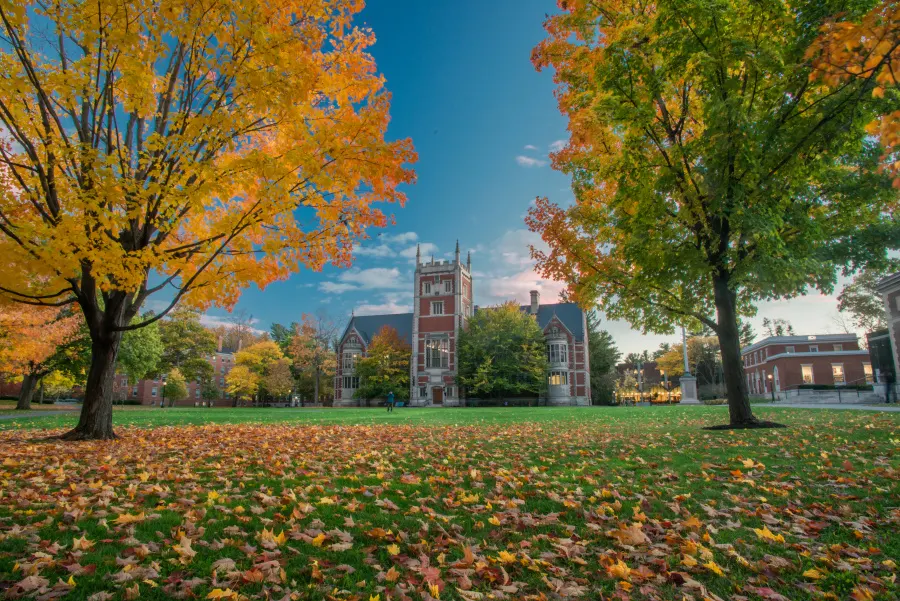
Established during Maine’s frontier era, Bowdoin’s 207-acre campus houses the Peary-MacMillan Arctic Museum and the original Civil War recruitment papers of Joshua Chamberlain. The college maintains its original 18th-century charter.
Key Highlights
- Firsts: First U.S. college Arctic museum
- Notable Alumni: Nathaniel Hawthorne, Harriet Beecher Stowe
- Unique: Original Maine wilderness campus
Institutional Profile
| Category | Details |
|---|---|
| Founded | 1794 |
| Type | Private liberal arts |
| Endowment | $2.7 billion |
| Campus | 207-acre coastal |
| Motto | Ut Aquila Versus Coelum (As an eagle towards the sky) |
Did You Know?
Bowdoin’s Walker Art Building was designed by McKim, Mead & White.
20. University of Tennessee, Knoxville (1794) – Knoxville, TN
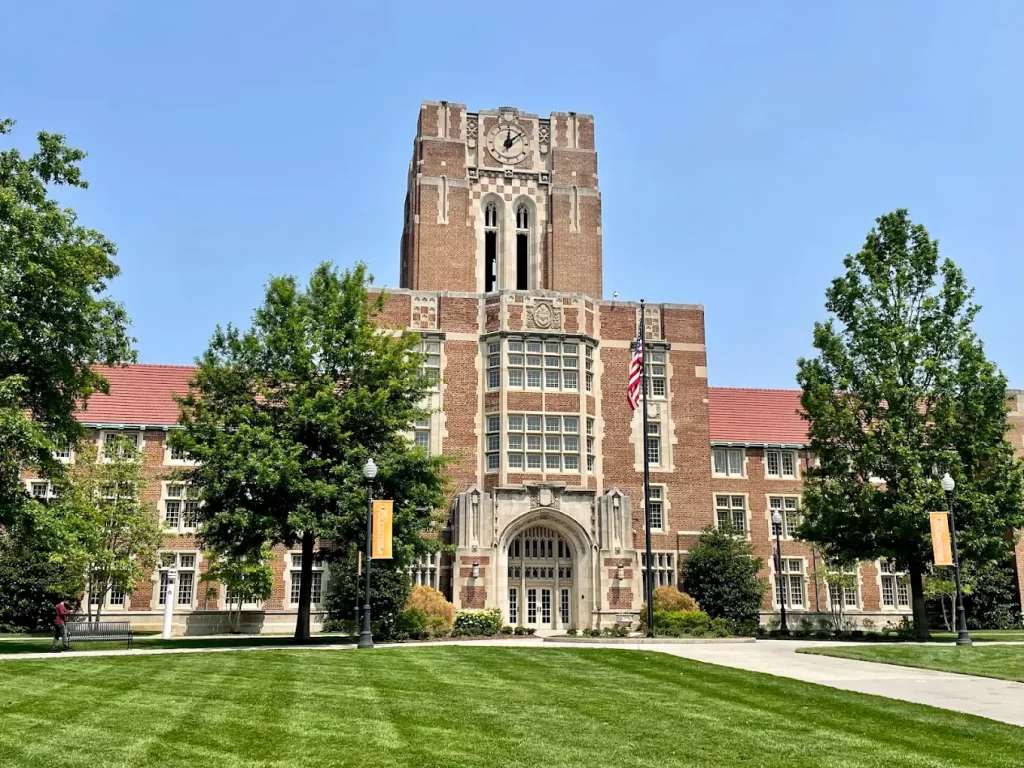
Founded as Blount College, UTK became the first university west of the Appalachians. Its 600-acre campus features the nation’s oldest continuously operated college radio station (WUOT, 1949) and the world’s fastest academic supercomputer.
Key Highlights
- Firsts: First college west of the Appalachians
- Notable Alumni: Peyton Manning, Margaret Trimble
- Unique: Birthplace of the “Volunteer” nickname
Institutional Profile
| Category | Details |
|---|---|
| Founded | 1794 |
| Type | Public research |
| Endowment | $1.5 billion |
| Campus | 600-acre urban |
| Motto | Veritatem cognoscetis (You shall know the truth) |
Did You Know?
UTK’s Hodges Library contains every book published in Tennessee since 1794.
Frequently asked questions (FAQs)
1. What makes these universities historically significant?
These institutions represent the birth of American higher education, with many being:
- The first in their category (e.g., Harvard as the oldest, UGA as the first state-chartered university)
- Pioneers in academic innovations (e.g., Penn’s first medical school, Columbia’s Core Curriculum)
- Training grounds for U.S. presidents, Nobel laureates, and industry leaders
2. How do these universities compare to newer institutions?
Advantages of historic universities:
- Strong alumni networks (e.g., Harvard’s 400,000+ alumni)
- Time-tested traditions (e.g., W&M’s honor system, Dartmouth’s Winter Carnival)
- Endowments enabling generous financial aid (e.g., Princeton’s no-loan policy)
Newer schools often lead in:
- Cutting-edge facilities (e.g., tech labs)
- Flexible, interdisciplinary programs
3. What are the admission requirements?
While specifics vary, most require:
- High GPA/test scores (SAT/ACT optional at some, like Bowdoin)
- Strong essays showcasing intellectual curiosity
- Letters of recommendation
- Portfolio/audition for arts programs
Example: UPenn values Benjamin Franklin’s ideals—practical, interdisciplinary learning.
4. Are there special programs for legacy students?
Many offer legacy considerations (e.g., Harvard, Yale), but policies differ:
- Not guaranteed admission (despite myths)
- May provide additional application support
Note: Public universities like UGA focus more on state residency.
5. How much does tuition cost, and is financial aid available?
2024 Estimates:
| Type | Tuition Range | Financial Aid |
|---|---|---|
| Ivy League | $60K–$85K/year | Need-blind, full-possible aid (e.g., Harvard covers 100% for <$85K income) |
| Public (in-state) | $10K–$30K | Merit/need-based (e.g., UNC’s Carolina Covenant) |
| Small Liberal Arts | $55K–$80K | Generous scholarships (e.g., Williams meets 100% need) |
6. What unique traditions do these schools have?
- Harvard: Primal Scream (naked run before finals)
- W&M: Crim Dell Bridge kiss = marriage myth
- Dartmouth: Homecoming bonfire (117+ years)
- Moravian: Christmas candlelight service (since 1742)
7. How strong are their research programs?
Top for innovation:
- Penn: First general-purpose computer (ENIAC)
- Pitt: Polio vaccine development
- Columbia: More Nobel Prizes than any U.S. university (96)
Liberal arts focus (e.g., Bowdoin, Williams):
- Undergraduate research opportunities
- Close faculty mentorship
School-Specific FAQs Examples:
Q: Why is William & Mary called the “Alma Mater of a Nation”?
A: It educated Thomas Jefferson, James Monroe, and other Founding Fathers.
Q: Can you visit Georgetown’s Exorcist stairs?
A: Yes! The famous horror movie steps are on campus.
Q: Is UNC’s Davie Poplar tree really tied to the university’s fate?
A: Legend says if it falls, UNC will fail—so it’s heavily protected!
Q: Does Dartmouth still use its 1769 charter?
A: Yes, though amended—it’s the oldest corporate charter in America.
1 thought on “Top 20 Oldest University in America”